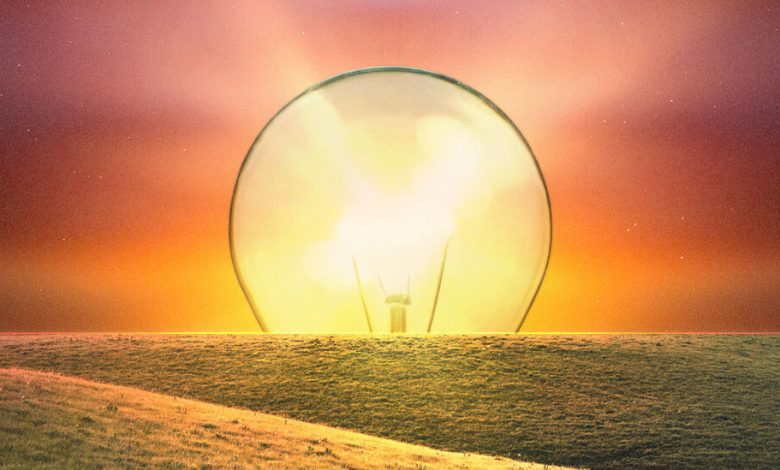A Brief and Futile Argument in Defense of the Incandescent Bulb

When Thomas Edison was working on the incandescent lamp in 1879, he purportedly said, “We are striking it big in the electric light, better than my vivid imagination first conceived. Where this thing is going to stop, Lord only knows.”
That heavenly glow stopped last week.
We knew the day was coming when the lights would go out, and by that, I mean the light of the incandescent light bulb. As of Aug. 1, the Biden administration’s regulations went into effect: All bulbs forthwith must comply with new efficiency standards. While not explicitly banning incandescent bulbs, these regulations will make it awfully hard — if not impossible — for the old Edison bulb to pass muster.
Intellectually, I’m on board. The more environmental regulations this country can impose, the better. My own microcontribution is an array of personal eco-diktats, some of which I try to force on other members of my family. I am forever turning out lights when people momentarily leave a room. I wash and reuse Ziploc bags until they no longer zip, and I enlist all stray bags into litter box duty. I am a manic recycler of paper.
There is simply no reasonable defense of incandescent light bulbs. LED bulbs last longer, are cheaper in the long run and, now that their once hefty price tag has dropped, in the short run as well. Their widespread use will significantly reduce carbon emissions.
But against reason, let me argue briefly and futilely in favor of the aesthetic, ambient, even tactile (I’ll explain) benefits of Edison’s radiant invention.
First, consider the alternatives. A hundred times I have been told that LED bulbs, with their unnatural froideur and their sour green aura, can now simulate all manner of glow. They come with labels like soft white and bright white, cool white and daylight. It’s all nonsense. The morose cast of the LED bulb looks one step up from the dread fluorescent, with its grim hue supplying the gray to barely finished basements, the line at the D.M.V. and the waiting room in the E.R. Stark. Devoid of passion. Institutional. I’m hardly the first person to notice that LED light simply looks bad.
Things illuminated by LED (human beings, for example) also look bad, sullen, even villainous. There is little hygge to be found in an LED-lit home. Rooms exude the doleful pallor of a desaturated sequence in a Christopher Nolan movie. I think of the poor painter in Oliver Sacks’s “An Anthropologist on Mars,” suddenly struck with a loss of color vision, who finds that what’s left looks distasteful, “the whites glaring, yet discolored and off-white, the blacks cavernous — everything wrong, unnatural stained and impure.” LED bulbs flicker; they fade. Occasionally they buzz, though apparently all bulbs are guilty of this, and it’s allegedly not their fault; it’s your house’s.
And LED is cold — not just in terms of color but actually cold. As a person whose internal thermostat runs on the chilly side, who needs a hot bath every night just to fully inhabit my extremities, the incandescent light bulb has served as a beacon. The 17th-century house I grew up in never acquired insulation. Heating was kept to a minimum, the logic being, I assume, that there was little point letting heat in if it was only going to waft right out. The old-fashioned standing radiators in the corner of each room (think “Eraserhead”) occasionally emitted a faint warmth; I would hug the one in the kitchen while waiting for my bagel to toast. A cat who became ill joined me there as he grew more sickly, sidling up to the radiator beside me until his time ran out.
The strongest heat in the house came in the form of my reading lamp, which I powered up with 100-watt bulbs and clutched as I read in bed, my fingers lightly roasting with pleasure. I associate that jolly warmth with late-night phone calls, books read after bedtime, the privacy of my own well-lit room.
The incandescent bulb has had its drawbacks. I never succeeded in getting it to prove a fake fever the way Elliott did in “E.T.” I was repeatedly told not to hug my lamp, but I ignored those warnings. Only a few times did I singe anything, usually a pajama sleeve. It wasn’t until adulthood that I set anything entirely aflame. It was bound to happen, and I only wish it hadn’t happened to Teddles, whom I placed on my child’s bedside lamp to resuscitate the teddy-bear-headed blanket from a state of slight sogginess. (We all make what, in hindsight, were clearly mistakes under parental stress.) Within moments, whatever toxic acrylic formulation constituted its beloved snuggly form had degraded into a tough fibrous shell.
I also killed numerous insects by proxy with the magnificent megawatt halogen torchiers (adieu) that I placed around my home, extinguishing any moth foolish enough to approach.
But these crimes took place years ago, before the 2007 warning bell, when a set of energy standards was signed by George W. Bush, initially intended to wipe out incandescent bulbs within 10 years. While in office, Donald Trump put a stop to many measures opposed by the industry groups. Until last Tuesday, old-fashioned bulbs continued to be available online, in dollar stores and at specialty lighting shops. A few may still be. Run!
Or simply succumb to the waning incandescence. Wait it out until fireplace season. Cling to the good news that, per a separate slate of proposed efficiency standards, the odious compact fluorescent light may soon be banned, too. We’ll always have candlelight.
The Times is committed to publishing a diversity of letters to the editor. We’d like to hear what you think about this or any of our articles. Here are some tips. And here’s our email: [email protected].
Follow The New York Times Opinion section on Facebook, Twitter (@NYTopinion) and Instagram.




